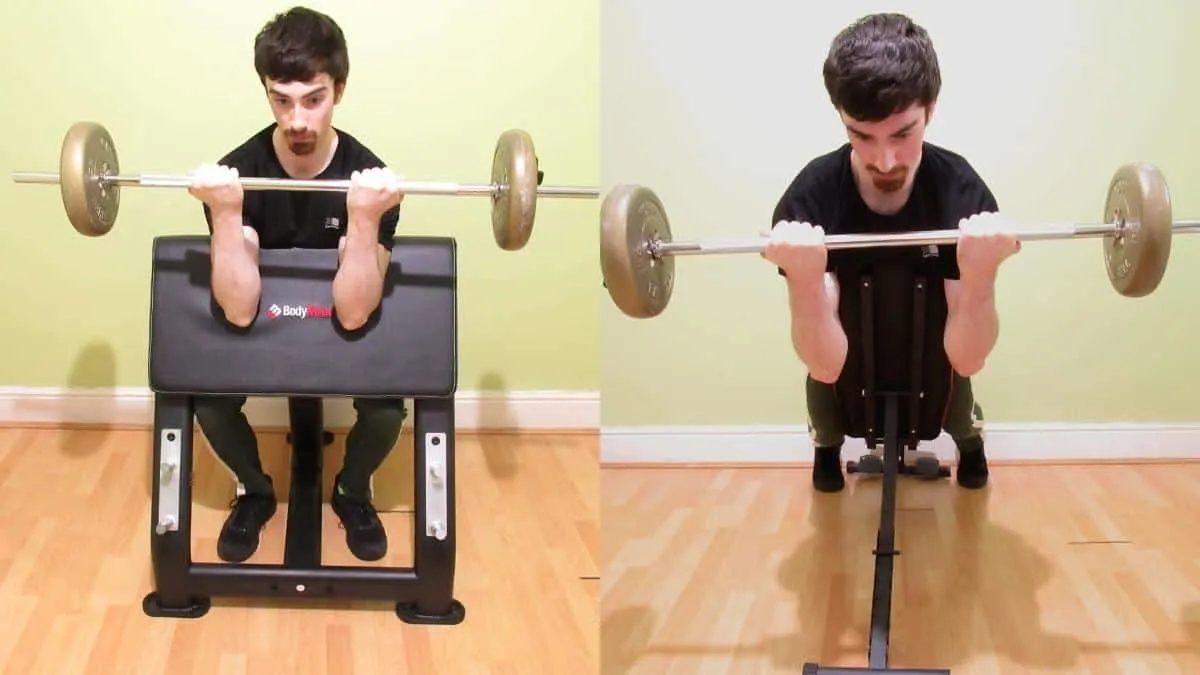What’s the difference between a spider curl and a preacher curl? And which is most effective for developing the bicep muscle?
Although these two exercises use the exact same equipment, they provide very different muscle stimulation. So in this barbell and dumbbell spider curl vs preacher curl comparison, we’ve pitted these movements against each other across three main categories: strength development, hypertrophy, and muscle activation.
Let’s see how the spider curl stacks up against the more popular EZ bar preacher curl.
Spider curls vs preacher curls: Muscle activation
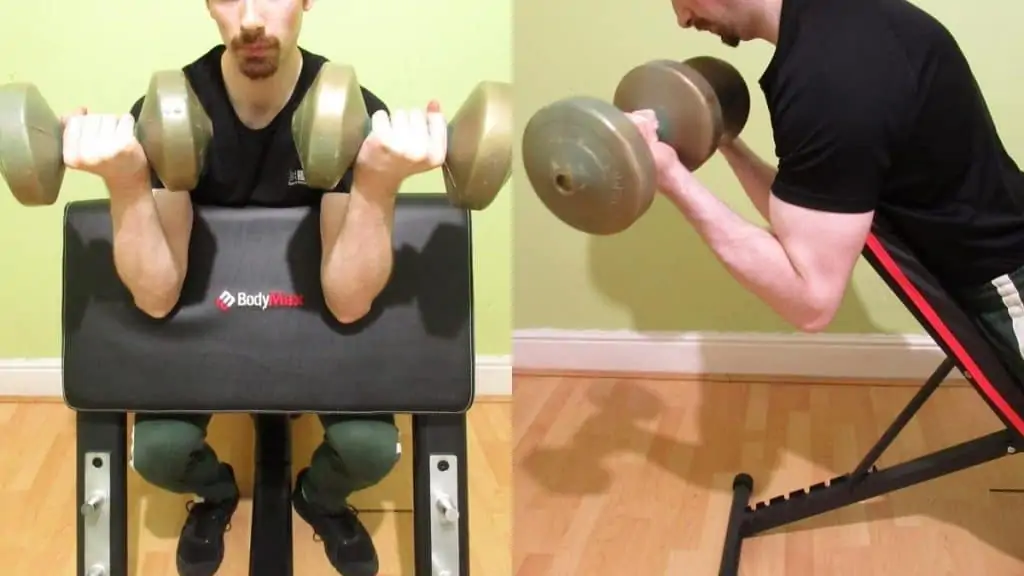
Spider curls and preacher curls work the exact same muscles—biceps, brachialis, brachioradialis, and the forearm flexors. Both movements also emphasize the biceps short (inner) head because they have you curl with your arms in front of your body.
The resistance curves of the exercises, however, are the complete opposite of one another. Spider curls are most challenging when your biceps are fully contracted. Preacher curls, on the other hand, are hardest when your elbows are close to lockout.
In other words, spider curls produce a better bicep contraction, while preacher curls provide a superior bicep stretch.
Both exercises activate the brachialis and brachioradialis to the same degree because these muscles don’t respond to different shoulder positions because their only function is elbow flexion.
If you still want to do one of these exercises but don’t have the usual equipment, then you can click the link to learn how to do preacher curls at home.
Spider curls vs preacher curls: Hypertrophy
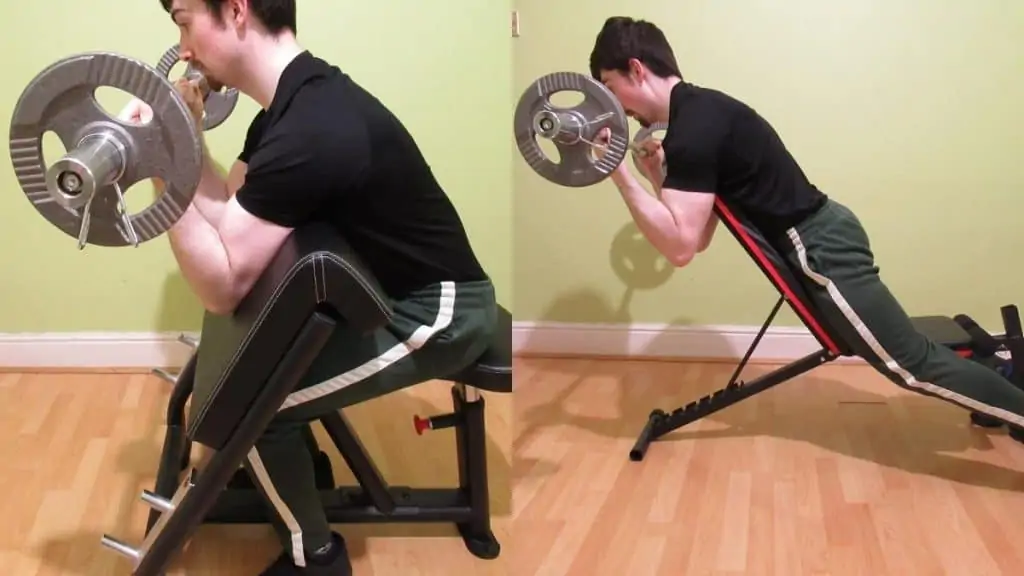
Most coaches believe that the eccentric portion of a rep (the stretch) is more important for muscle growth than the concentric phase (the contraction) because it creates higher levels of muscle damage and recruits more fibers. So based on this line of reasoning, preacher curls are superior to spider curls for muscle growth because they provide better bicep stimulation.
Preacher curls also enable you to lift heavier weights, which lets you overload your biceps with even more growth-stimulating resistance.
While it’s likely that preacher curls—which are the ideal spider curls alternative—will lead to greater hypertrophy for these two reasons, the most important factors that determine the quality of your results are your training volume and progressive overload. Of course, your diet and recovery also play a huge role, but let’s stick to our comparison for today.
The point is that you can manipulate your training volume and progressive overload on both exercises. So over the long term, both movements will produce similar if not identical results if you regularly increase the resistance and/or perform more reps per set. After all, your biceps can only get so big, so regardless of which exercise you choose, you’re going to attain the same physique in the long run.
Spider curls vs preacher curls: Strength gains
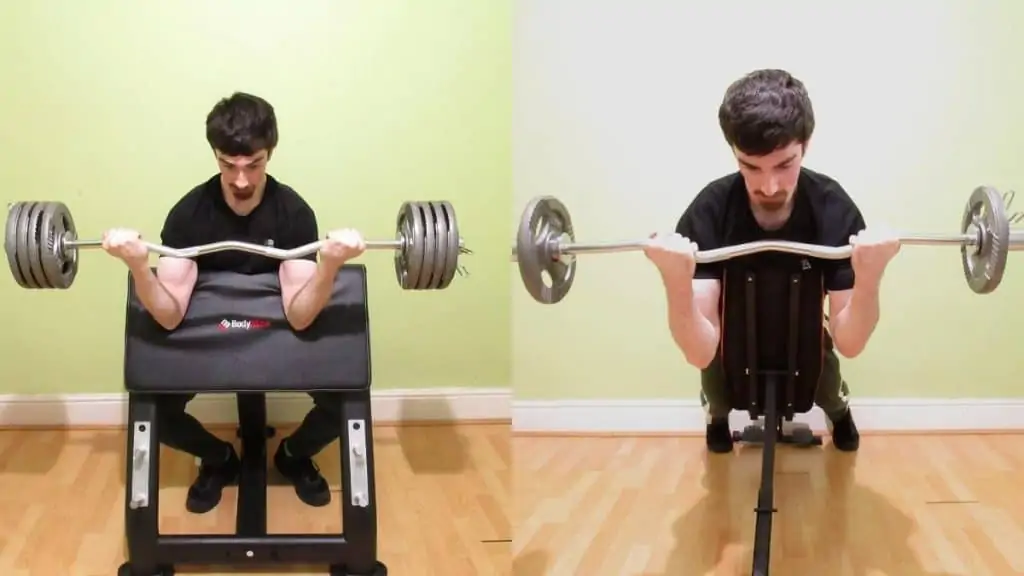
As mentioned, preacher curls enable you to lift heavier weights than spider curls. This is because preacher curls, unlike spider curls, emphasize the eccentric part of the rep, which is where muscles are naturally at their strongest.
So although you can still get strong from spider curls, if you want to test your bicep strength and lift the heaviest weights possible, then preacher curls are your best bet.
Related Comparison: Preacher curls vs standing curls
Should you do both exercises?
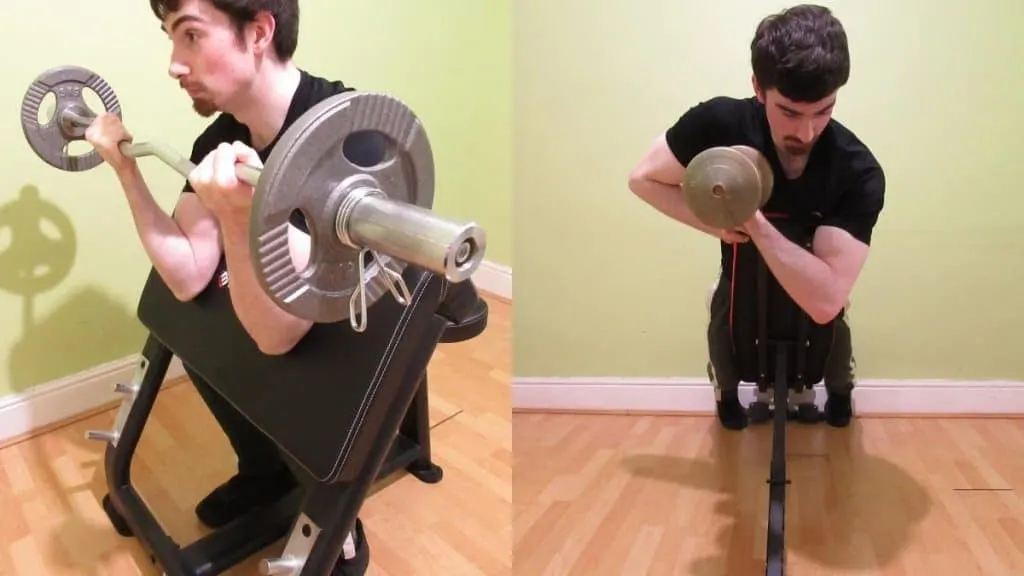
Performing both exercises is a great idea because they each prioritize opposing parts of the lifting motion. Spider curls generate a more intense pump because they emphasize the contracted portion of the curling motion. Conversely, preacher curls provide a better bicep stretch because they focus on the eccentric part of the rep.
By doing both movements, you’ll naturally recruit a broader range of muscle fibers and create a more potent stimulus for hypertrophy.
You can also click to link the learn the difference between a preacher curl and a concentration curl and see which one is best for building your biceps.
Which one should you perform first?
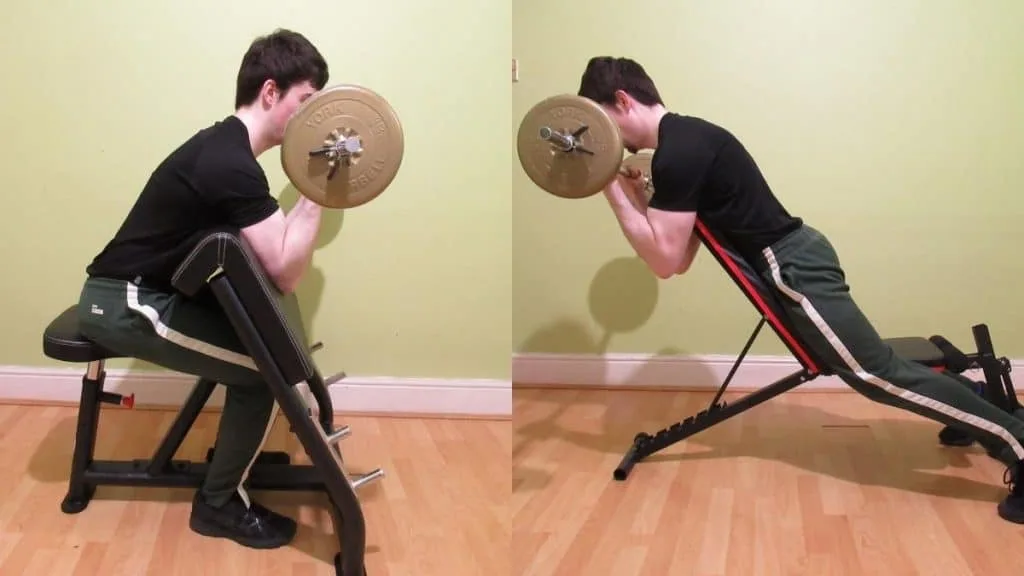
Since preacher curls allow you to lift the most weight and thus overload your biceps with more tension, it could be argued that you should do them before spider curls.
On the other hand, since spider curls maximally stimulate the biceps in their fully shortened position (the position where a muscle is naturally weakest), it could be argued that you should perform them first when you have the most strength.
Since I give more weight to progressive overload than manipulating resistance curves, I recommend starting with preacher curls so that you can focus on overloading your biceps with the maximum amount of tension. Spider curls make a great finishing exercise because they force your biceps to contract more intensely than preacher curls.
See Also: Spider curls vs drag curls
Spider curl vs preacher curl: The verdict
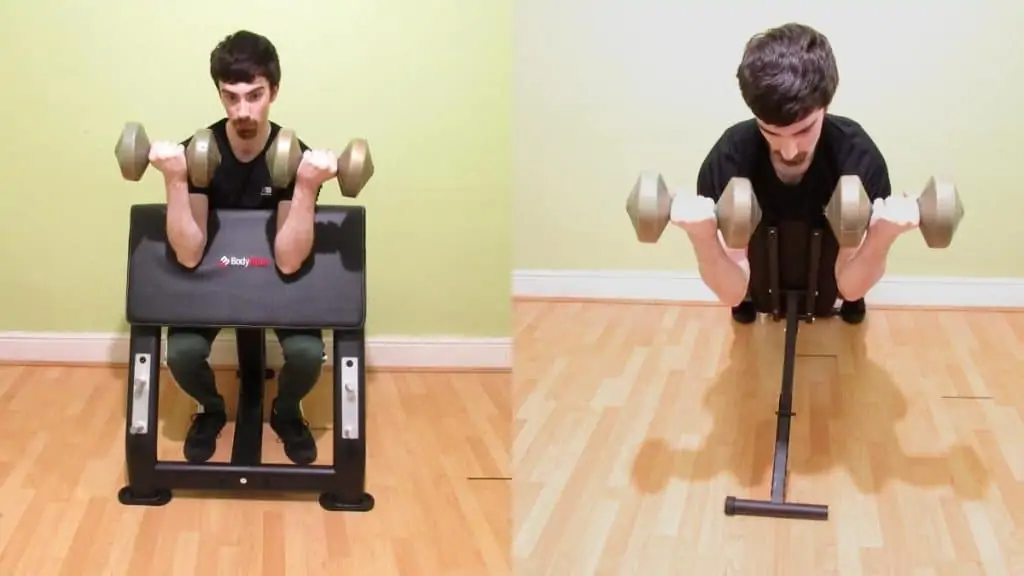
As you learned, you don’t have to choose either spider curls or preacher curls; you can do both. But what if you don’t have the time or desire to perform both movements?
In that case, preacher curls are your best bet because they enable you to lift the most amount of weight. They’re also more comfortable to perform than spider curls because you can do them sat down.
In contrast, spider curls are harder because they train your biceps in their shortest (and weakest) muscle position. As such, you’ll have to lift lighter weights on this exercise.
I hope that you enjoyed our spider curls vs preacher curls showdown. As you can see, both exercises have their pros and cons, but in the final evaluation, preacher curls just edge it over their rival.
References
- Walker-Ng, S. B. D. A. M. (2020, November 10). Min-Maxing Strength Curves for Hypertrophy. Outlift. https://outlift.com/strength-curves-hypertrophy/
- Using Eccentric Training to Increase Muscle Mass | ISSA. (n.d.). ISSA. https://www.issaonline.com/blog/index.cfm/2020/using-eccentric-training-to-increase-muscle-mass

